Simulation Study on the Prediction of Macroscale Young’s Modulus Based on the Mesoscale Characteristics of Tight Glutenite Reservoirs
Abstract
:1. Introduction
2. Obtaining Microscale Mechanical Parameters of Glutenite
3. Finite Element Numerical Simulation
3.1. Glutenite Modeling
3.2. Numerical Implementation and Scheme
3.3. Numerical Verification
4. Results
4.1. The Impact of Gravel Size and Content
4.2. The impact of Gravel Particle Size Distribution Ratio
5. Discussions
5.1. Comparison with the Homogenization Methods
5.2. Parameter Sensitivity and Correlation Analysis
6. Conclusions
Author Contributions
Funding
Data Availability Statement
Conflicts of Interest
References
- Li, G.; Qin, J.; Xian, C.; Fan, X.; Zhang, J.; Ding, Y. Theoretical understandings, key technologies and practices of tight conglomerate oilfield efficient development: A case study of the Mahu oilfield, Junggar Basin, NW China. Pet. Explor. Dev. 2020, 47, 1275–1290. [Google Scholar] [CrossRef]
- Du, J.; Zhi, D.; Li, J.; Yang, D.; Tang, Y.; Qi, X.; Xiao, L.; Wei, L. Major breakthrough of well Gaotan 1 and exploration prospects of lower assemblage in southern margin of Junggar basin, NW, China. Pet. Explor. Dev. 2019, 46, 216–227. [Google Scholar] [CrossRef]
- Wang, Y.; Hao, X.; Hu, Y. Orderly distribution and differential enrichment of hydrocarbon in oil-rich sags: A case study of Dongying Sag, Jiyang depression, Bohai Bay Basin, East China. Pet. Explor. Dev. 2018, 45, 840–850. [Google Scholar] [CrossRef]
- Li, Z.; Wang, S.; Li, L.; Zhang, J.; Li, T. Numerical simulation of brittleness effect on propagation behavior of glutenite hydraulic fractures. Ain Shams Eng. J. 2021, 12, 3419–3427. [Google Scholar] [CrossRef]
- Ma, X.; Zou, Y.; Li, N.; Chen, M.; Zhang, Y.; Liu, Z. Experimental study on the mechanism of hydraulic fracture growth in a glutenite reservoir. J. Struct. Geol. 2017, 97, 37–47. [Google Scholar] [CrossRef]
- Nie, Y.; Zhang, G.; Wen, J.; Li, S.; Zhou, D. Cyclic injection to reduce hydraulic fracture surface roughness in glutenite reservoirs. Int. J. Rock Mech. Min. Sci. 2021, 142, 104740. [Google Scholar] [CrossRef]
- Zhang, Z.; Zhang, S.; Zou, Y.; Ma, X.; Liu, L. Experimental investigation into simultaneous and sequential propagation of multiple closely spaced fractures in a horizontal well. J. Pet. Sci. Eng. 2021, 202, 108531. [Google Scholar] [CrossRef]
- Rui, Z.; Guo, T.; Feng, Q.; Qu, Z.; Qi, N.; Gong, F. Influence of gravel on the propagation pattern of hydraulic fracture in the glutenite reservoir. J. Pet. Sci. Eng. 2018, 165, 627–639. [Google Scholar] [CrossRef]
- Liu, J.; Ge, H.; Zhang, Z. Influence of mechanical contrast between the matrix and gravel on fracture propagation of glutenite. J. Pet. Sci. Eng. 2022, 208, 109639. [Google Scholar] [CrossRef]
- Liu, J.; Wang, J.; Ge, H.; Zhou, W.; Chen, B.; Li, X.; Xue, X.; Luo, S. Effect of gravel on rock failure in glutenite reservoirs under different confining pressures. Pet. Sci. 2023, 20, 3022–3036. [Google Scholar] [CrossRef]
- Cascante, G.; Santamarina, C.; Yassir, N. Flexural excitation in a standard torsional-resonant column. Can. Geotech. J. 1998, 35, 478–490. [Google Scholar] [CrossRef]
- Menq, F.Y. Dynamic Properties of Sandy and Gravelly Soils. Ph.D. Dissertation, University of Texas at Austin, Austin, TX, USA, 2003. [Google Scholar]
- Payan, M.; Senetakis, K.; Khoshghalb, A.; Khalili, N. Effect of gradation and particle shape on small-strain Young’s modulus and Poisson’s ratio of sands. Int. J. Geomech. 2017, 17, 04016120. [Google Scholar] [CrossRef]
- Payan, M.; Khoshini, M.; Jamshidi Chenari, R. Elastic dynamic Young’s modulus and Poisson’s ratio of sand–silt mixtures. J. Mater. Civ. Eng. 2020, 32, 04019314. [Google Scholar] [CrossRef]
- Wichtmann, T.; Triantafyllidis, T. On the influence of the grain size distribution curve on P-wave velocity, constrained elastic modulus Mmax and Poisson’s ratio of quartz sands. Soil Dyn. Earthq. Eng. 2010, 30, 757–766. [Google Scholar] [CrossRef]
- Shi, X.; Jiang, S.; Lu, S.; He, Z.; Li, D.; Wang, Z.; Xiao, D. Investigation of mechanical properties of bedded shale by nanoindentation tests: A case study on Lower Silurian Longmaxi Formation of Youyang area in southeast Chongqing, China. Pet. Explor. Dev. 2019, 46, 155–164. [Google Scholar] [CrossRef]
- Guo, W. A Study of Strength Parameter Evolution and a Statistical Damage Constitutive Model of Cemented Sand and Gravel. Materials 2023, 16, 542. [Google Scholar]
- Zhang, X. Numerical simulation of cracking propagation of asphalt concrete beam. J. Fail. Anal. Prev. 2018, 18, 221. [Google Scholar] [CrossRef]
- Liu, P.; Ju, Y.; Ranjith, P.G.; Zheng, Z.; Chen, J. Experimental investigation of the effects of heterogeneity and geostress difference on the 3D growth and distribution of hydrofracturing cracks in unconventional reservoir rocks. J. Nat. Gas Sci. Eng. 2016, 35, 541–554. [Google Scholar] [CrossRef]
- Ma, D.; Wu, Y.; Hu, X.; Li, D.; Geng, H.; Hao, Y. DEM simulation of injection-induced micro-cracks behaviors in the heterogeneous glutenite by fluid-solid coupling. Comput. Part. Mech. 2023. [Google Scholar] [CrossRef]
- Lu, Y.; Tan, Y.; Li, X.; Liu, C. Methodology for simulation of irregularly shaped gravel grains and its application to DEM modeling. J. Comput. Civ. Eng. 2017, 31, 04017023. [Google Scholar] [CrossRef]
- Xu, W.J.; Wang, S.; Zhang, H.Y.; Zhang, Z.L. Discrete element modelling of a soil-rock mixture used in an embankment dam. International. J. Rock Mech. Min. Sci. 2016, 86, 141–156. [Google Scholar] [CrossRef]
- Akram, M.S.; Sharrock, G.B.; Mitra, R. Investigating mechanics of conglomeratic rocks: Influence of clast size distribution, scale and properties of clast and interparticle cement. Bull. Eng. Geol. Environ. 2019, 78, 2769–2788. [Google Scholar] [CrossRef]
- Cho, N.A.; Martin, C.D.; Sego, D.C. A clumped particle model for rock. Int. J. Rock Mech. Min. Sci. 2007, 44, 997–1010. [Google Scholar] [CrossRef]
- Detournay, E. Propagation regimes of fluid-driven fractures in impermeable rocks. Int. J. Geomech. 2004, 4, 35–45. [Google Scholar] [CrossRef]
- Yoon, J.; Zang, A.; Stephansson, O. Simulating fracture and friction of Aue granite under confined asymmetric compressive test using clumped particle model. Int. J. Rock Mech. Min. Sci. 2012, 49, 68–83. [Google Scholar] [CrossRef]
- Jeong, S. Numerical Modeling of Soil-Cement based on Discrete Element Method. J. Korean Geosynth. Soc. 2016, 15, 33–42. [Google Scholar] [CrossRef]
- Zhu, W.; Hughes, J.J.; Bicanic, N.; Pearce, C.J. Nanoindentation mapping of mechanical properties of cement paste and natural rocks. Mater. Charact. 2007, 58, 1189–1198. [Google Scholar] [CrossRef]
- Chen, P.; Han, Q.; Ma, T.; Lin, D. The mechanical properties of shale based on micro-indentation test. Pet. Explor. Dev. 2015, 42, 723–732. [Google Scholar] [CrossRef]
- Graham, S.P.; Rouainia, M.; Aplin, A.C.; Cubillas, P.; Fender, T.D.; Armitage, P.J. Geomechanical characterisation of organic-rich calcareous shale using AFM and nanoindentation. Rock Mech. Rock Eng. 2020, 54, 303–320. [Google Scholar] [CrossRef]
- Oliver, W.C.; Pharr, G.M. An improved technique for determining hardness and elastic modulus using load and displacement sensing indentation experiments. J. Mater. Sci. 1992, 7, 1564–1583. [Google Scholar] [CrossRef]
- Zhang, Z.; Zhang, S.; Shi, S.; Zou, Y.; Li, J.; Ma, X.; Xiao, F. Evaluation of multi-scale mechanical properties of conglomerate based on nano-indentation experiment and homogenization method-taking the tight conglomerate reservoir on the south slope of Mahu sag as an example. Chin. J. Rock Mech. Eng. 2022, 41, 926–940. [Google Scholar]
- Li, H.; Ma, H.; Yang, C.; Zhao, K.; Hu, Z.; Daemen, J.J.K. Acoustic emission characteristics of rock salt under multi-stage cyclic loading. Int. J. Fatigue 2023, 176, 107911. [Google Scholar] [CrossRef]
- Li, S.; Yang, D.; Huang, Z.; Gu, Q.; Zhao, K. Acoustic emission characteristics and failure mode analysis of rock failure under complex stress state. Theor. Appl. Fract. Mech. 2022, 122, 103666. [Google Scholar] [CrossRef]
- Hashin, Z. The elastic moduli of heterogeneous materials. J. Appl. Mech. 1962, 29, 143–150. [Google Scholar] [CrossRef]
- Hashin, Z.; Shtrikman, S. On some variational principles in anisotropic and non—homogeneous elasticity. J. Mech. Phys. Solids 1962, 10, 335–342. [Google Scholar] [CrossRef]
- Hill, R. A self-consistent mechanics of composite materials. J. Mech. Phys. Solids 1965, 13, 213–222. [Google Scholar] [CrossRef]
- Eshelby, J. The determination of the elastic field of an ellipsoidal inclusion and related problems. Proc. R. Soc. Lond. A 1957, 241, 376–396. [Google Scholar]
- Eshelby, J. The force on an elastic singularity. Proc. R. Soc. Lond. A 1951, 244, 87–112. [Google Scholar]
- Mori, T.; Tanaka, K. Average stress in matrix and average elastic energy of materials with misfitting inclusions. Acta Metall. 1973, 21, 571–574. [Google Scholar] [CrossRef]
- Sheng, P. Effective-medium theory of sedimentary rocks. Phys. Rev. B 1990, 41, 4507. [Google Scholar] [CrossRef]
- Markov, M.; Kazatchenko, E.; Mousatov, A.; Pervago, E. Generalized differential effective medium method for simulating effective elastic properties of two dimensional percolating composites. J. Appl. Phys. 2012, 112, 026101. [Google Scholar] [CrossRef]
- Sobol, I.M. Global sensitivity indices for nonlinear mathematical models and their Monte Carlo estimates. Math. Comput. Simul. 2001, 55, 271–280. [Google Scholar] [CrossRef]
- Saltelli, A.; Aleksankina, K.; Becker, W.; Fennell, P.; Ferretti, F.; Holst, N.; Li, S.; Wu, Q. Why so many published sensitivity analyses are false: A systematic review of sensitivity analysis practices. Environ. Model. Softw. 2019, 114, 29–39. [Google Scholar] [CrossRef]
- Yin, Z.; Feng, T.; MacBeth, C. Fast assimilation of frequently acquired 4d seismic data for reservoir history matching. Comput. Geosci. 2019, 128, 30–40. [Google Scholar] [CrossRef]
- Faber, N.K.M. Uncertainty estimation for multivariate regression coefficients. Chemom. Intell. Lab. Syst. 2002, 64, 169–179. [Google Scholar] [CrossRef]
- Shi, Y.; Xu, F.; Li, X.; Lei, Z.; Cui, Q.; Zhang, Y. Comparison of influence factors on horizontal ground heat exchanger performance through numerical simulation and gray correlation analysis. Appl. Therm. Eng. 2022, 213, 118756. [Google Scholar] [CrossRef]
- Wang, G.; Xie, C.; Chen, S.; Yang, J.; Yang, M. Random matrix theory analysis of cross-correlations in the us stock market: Evidence from pearson’s correlation coefficient and detrended cross-correlation coefficient. Phys. A Stat. Mech. Its Appl. 2013, 392, 3715–3730. [Google Scholar] [CrossRef]
- Belgiu, M.; Drăguţ, L. Random forest in remote sensing: A review of applications and future directions. ISPRS J. Photogramm. Remote Sens. 2016, 114, 24–31. [Google Scholar] [CrossRef]
- Kaminski, M.; Lauke, B. Uncertainty in effective elastic properties of particle filled polymers by the monte-carlo simulation. Compos. Struct. 2015, 123, 374–382. [Google Scholar] [CrossRef]
- Yin, Z.; Strebelle, S.; Caers, J. Automated monte carlo-based quantification and updating of geological uncertainty with borehole data (autobel v1.0). Geosci. Model Dev. 2020, 13, 651–672. [Google Scholar] [CrossRef]

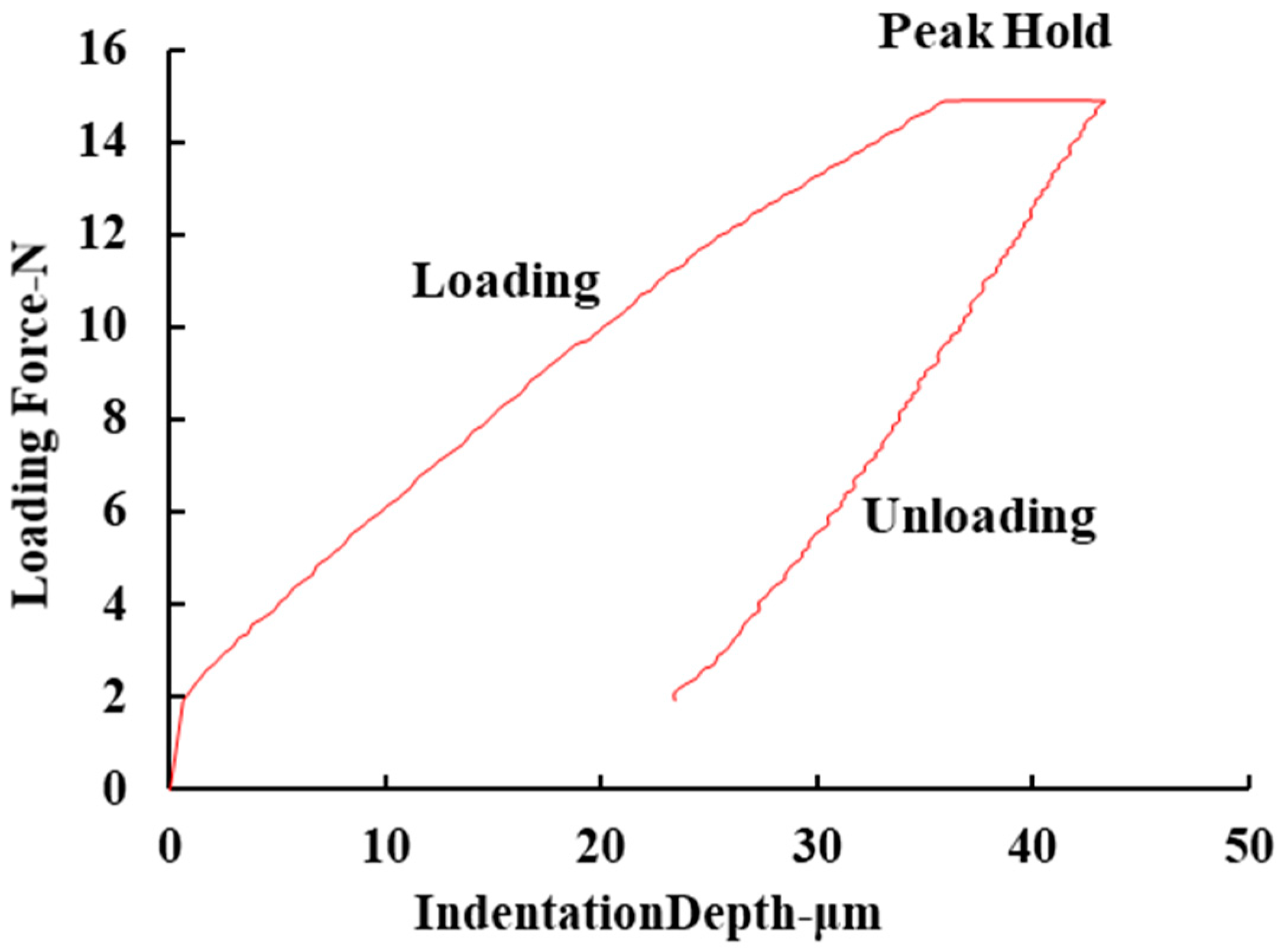
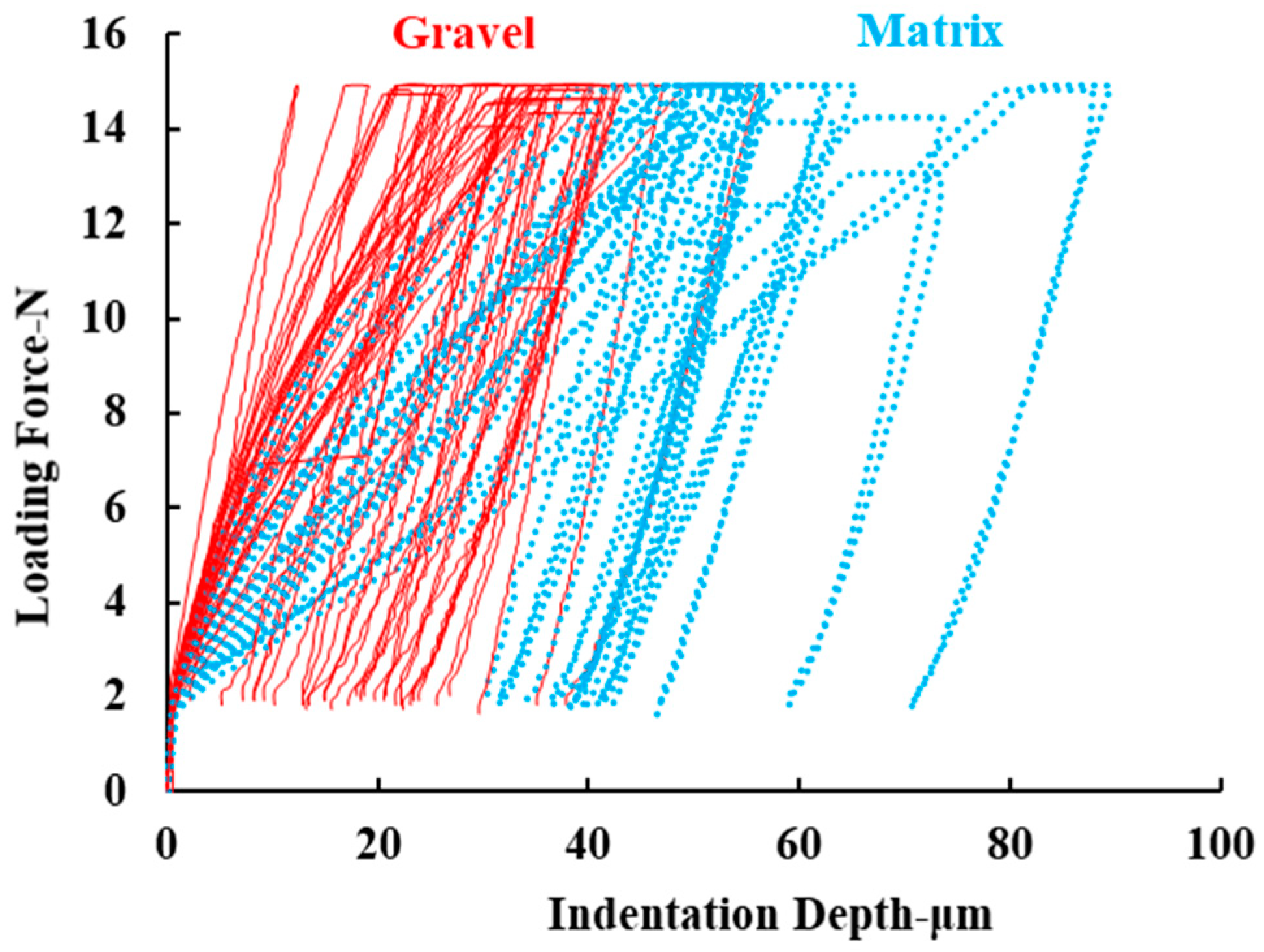

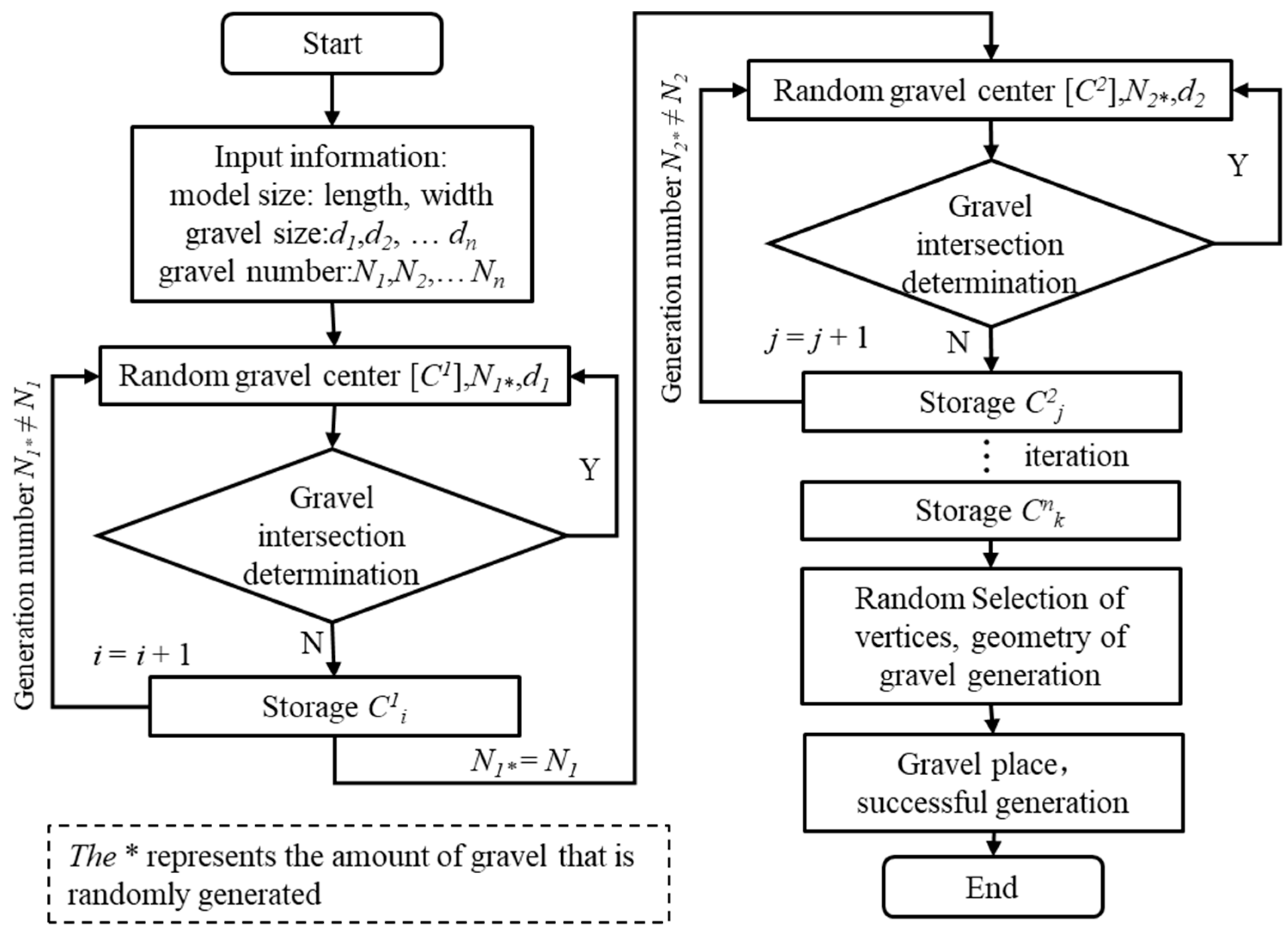


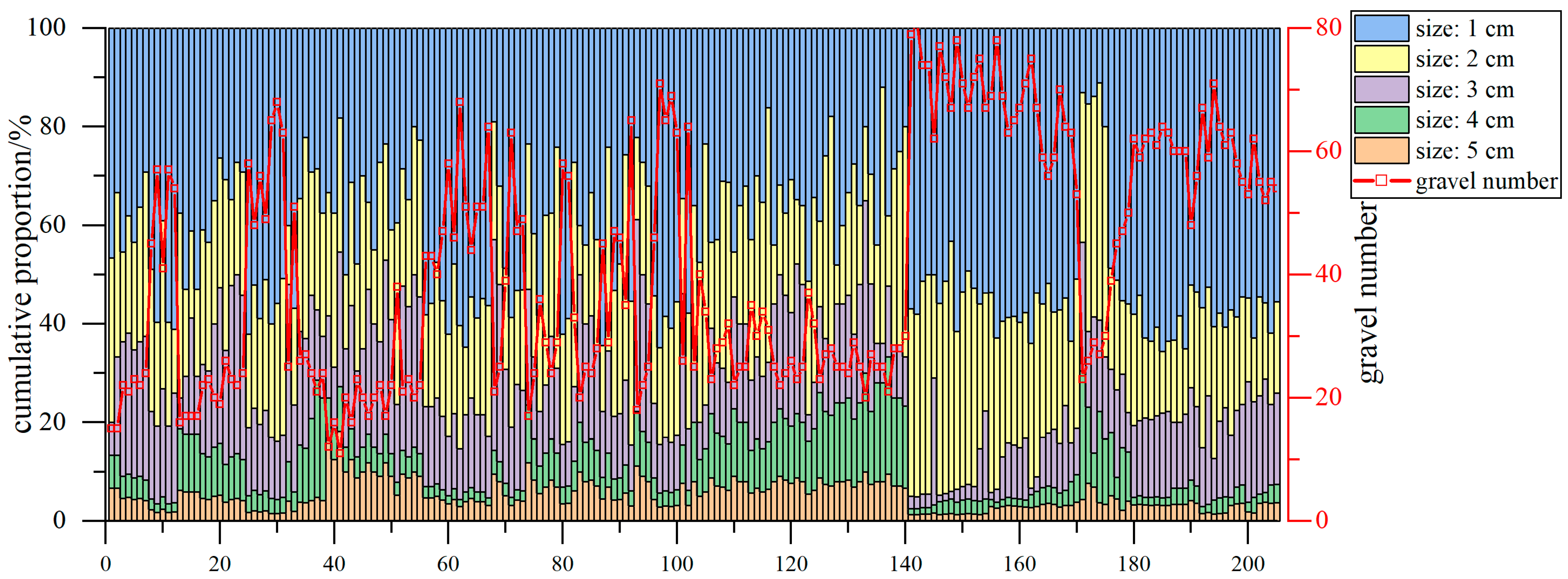
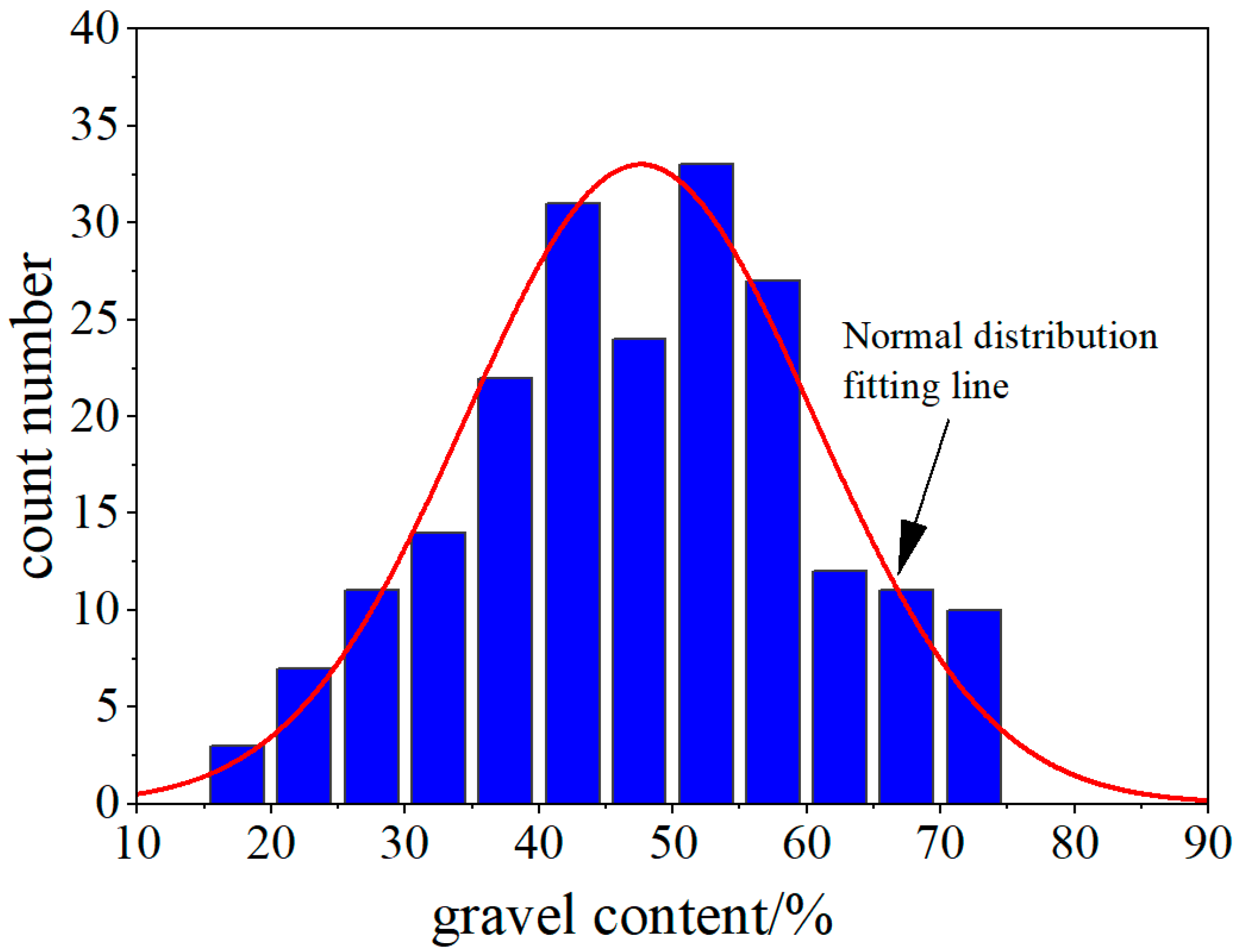
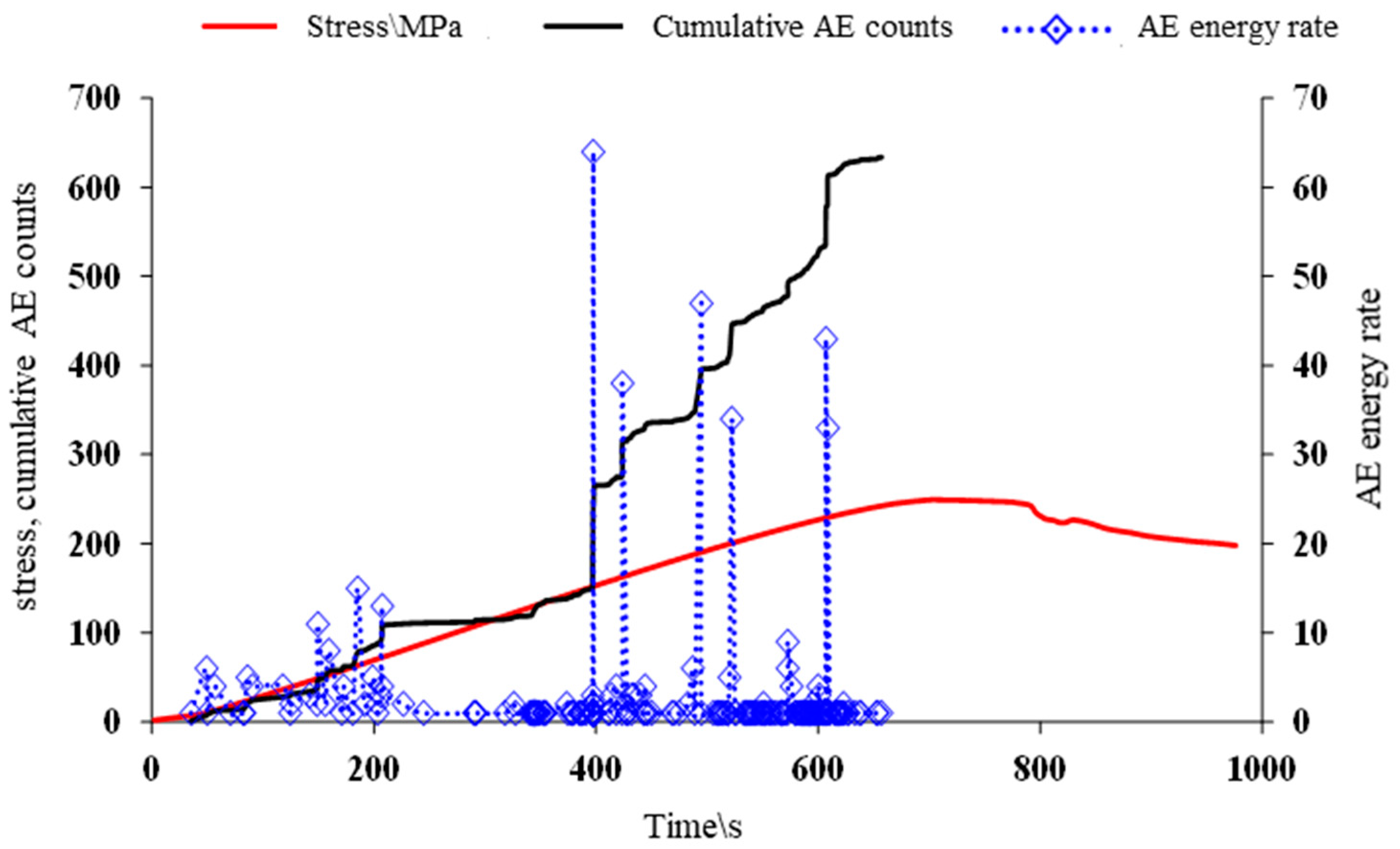



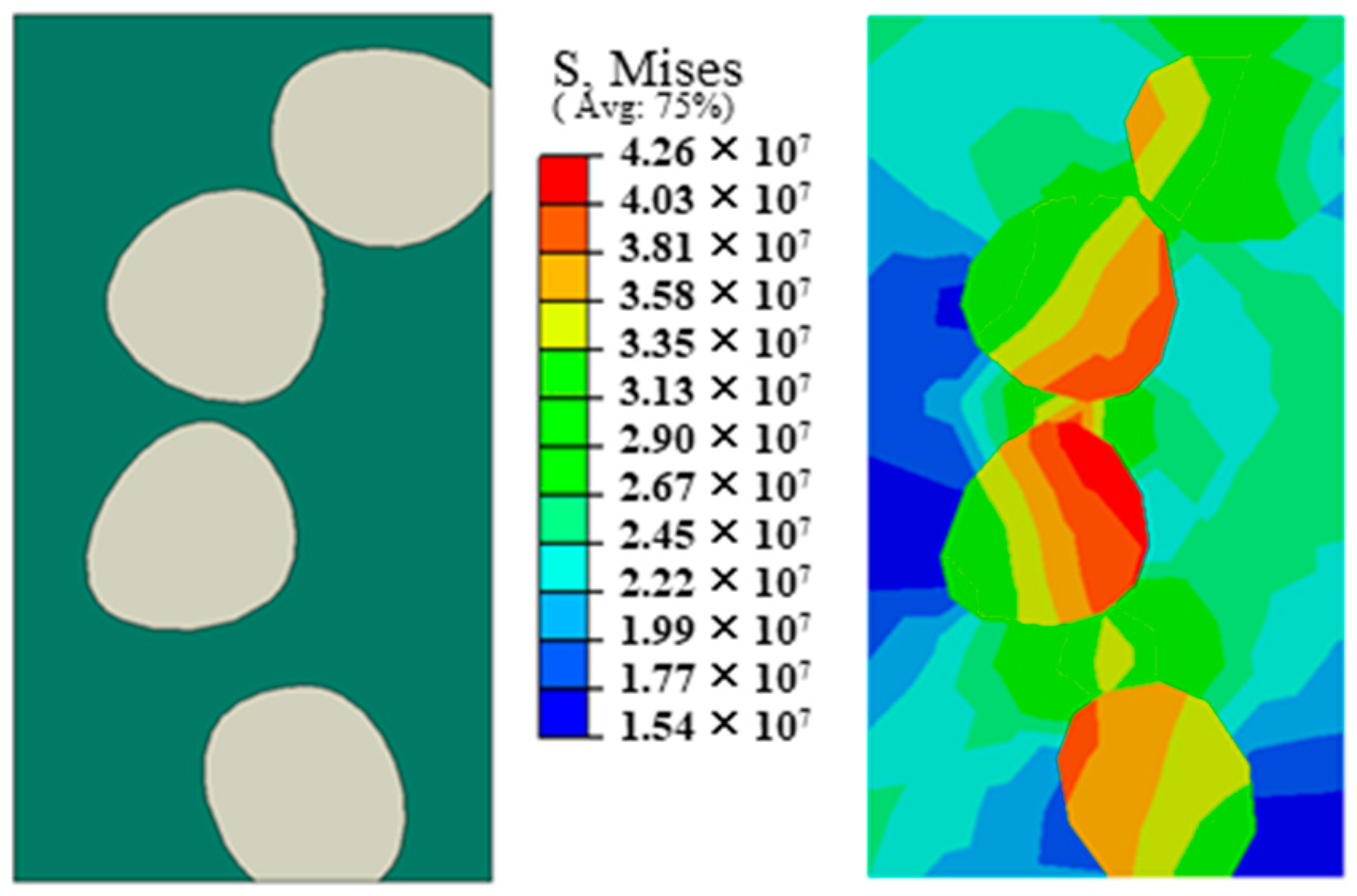

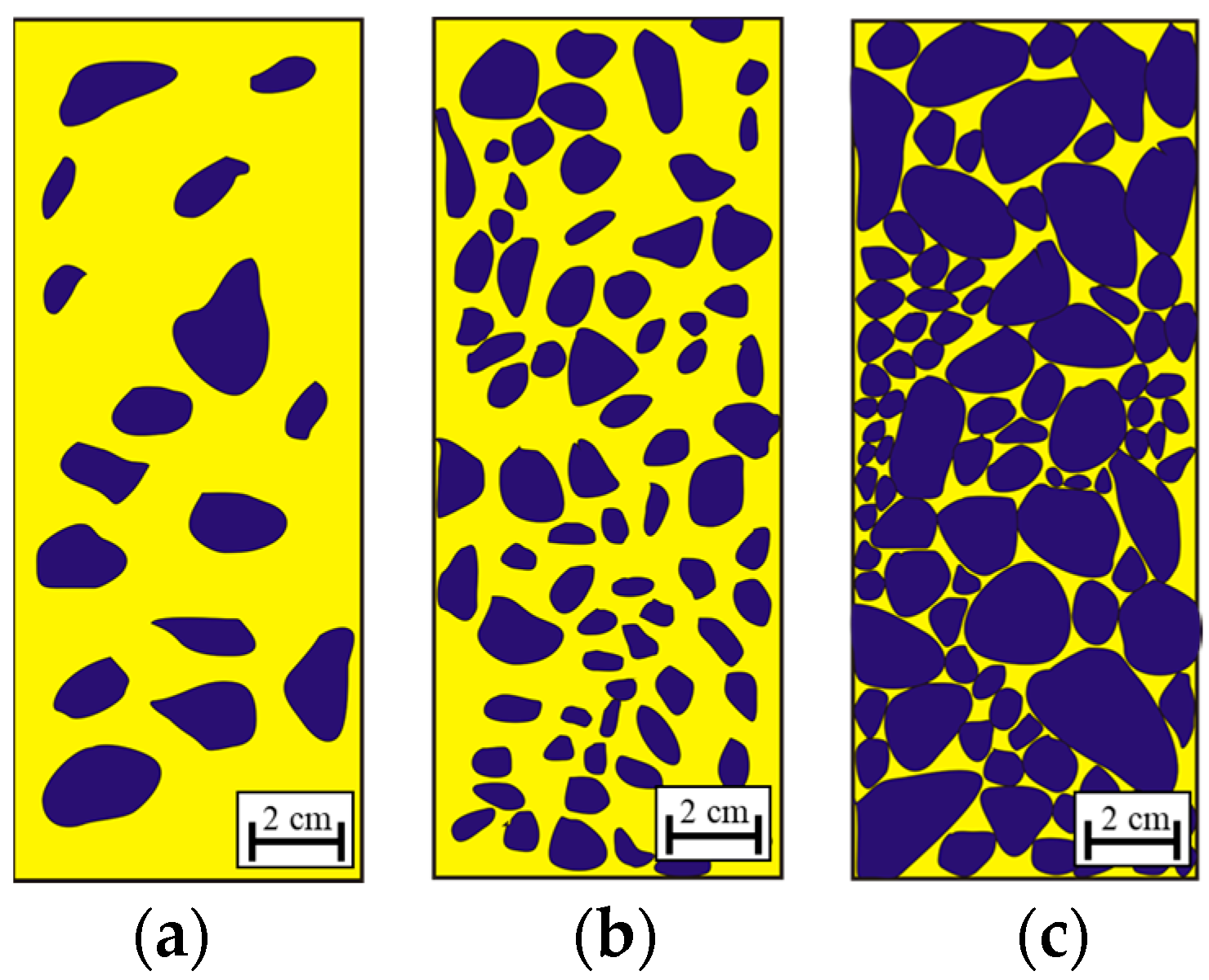
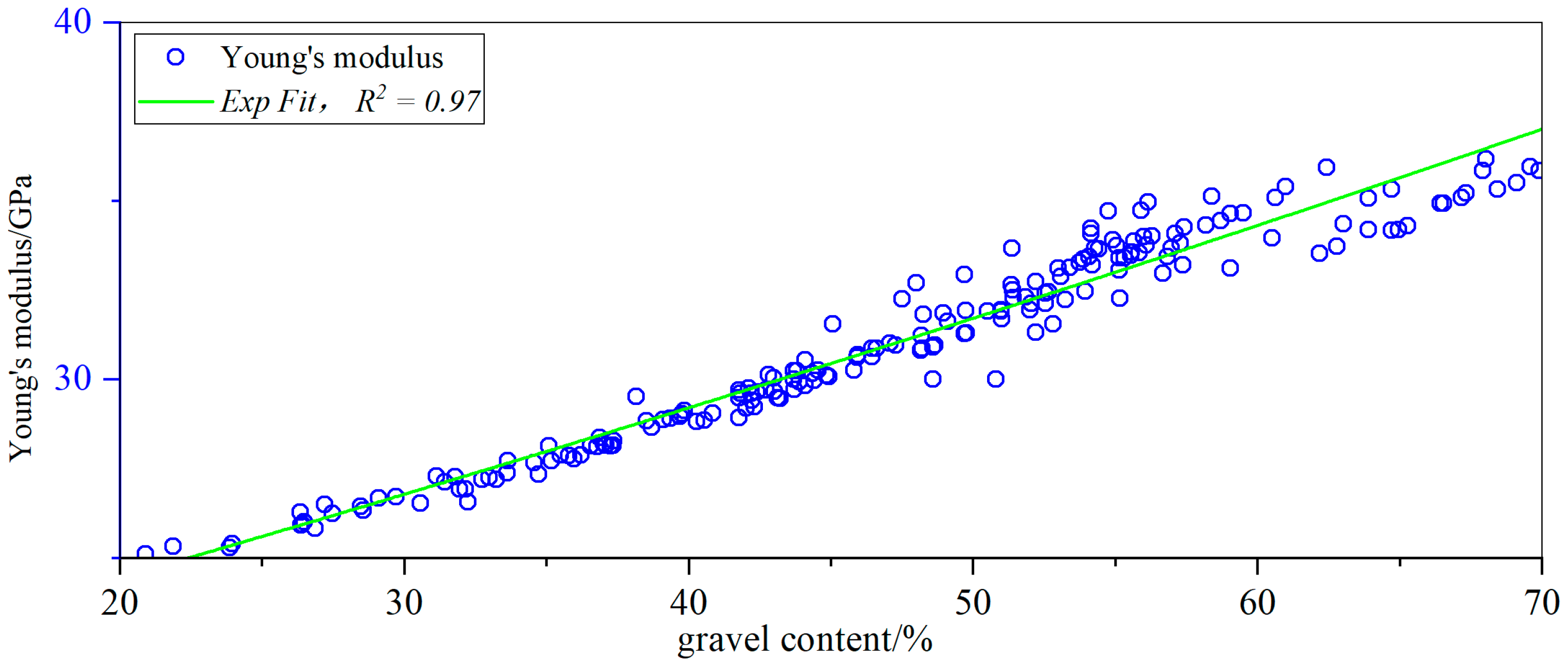
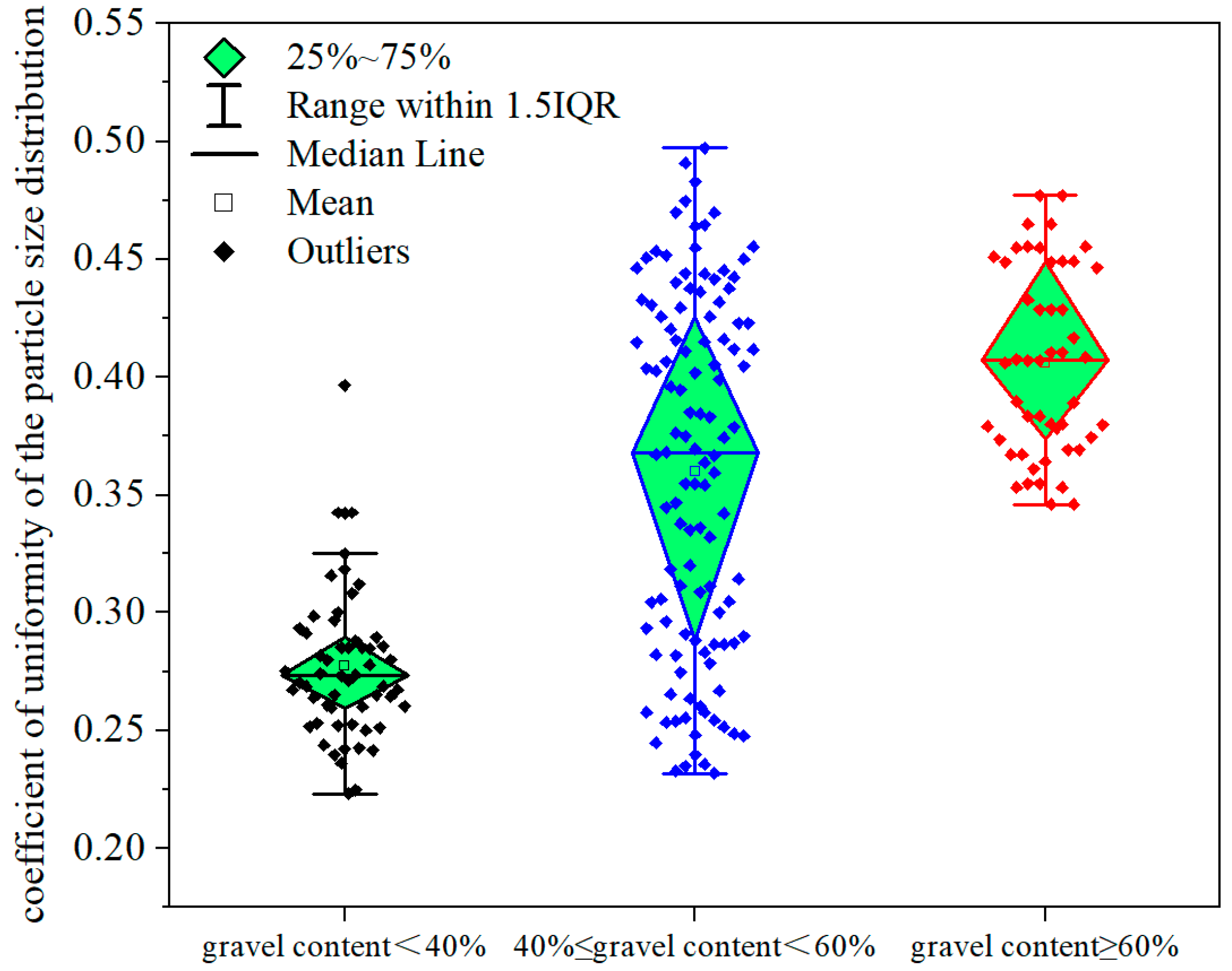

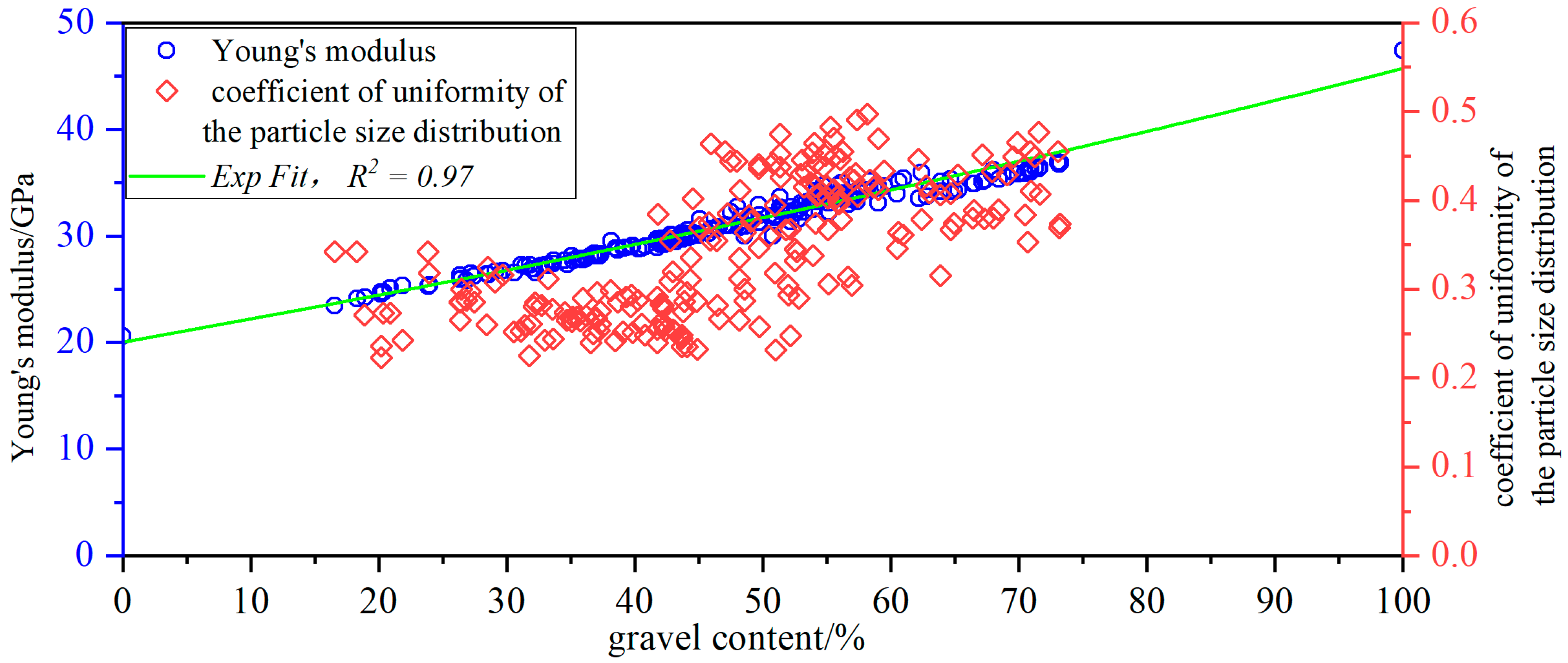





| Methods | Gravel Number | Gravel Content | Coefficient of Uniformity |
|---|---|---|---|
| Sobol index method | 0.053 | 0.942 | 0.004 |
| Multivariate Regression Coefficients | 0.041 | 20.622 | −2.743 |
| Gray Relational Coefficient | 0.670 | 0.900 | 0.650 |
| Pearson Correlation Coefficient | 0.830 | 0.980 | 0.730 |
| The score of Random Forest | 0.010 | 0.984 | 0.006 |
Disclaimer/Publisher’s Note: The statements, opinions and data contained in all publications are solely those of the individual author(s) and contributor(s) and not of MDPI and/or the editor(s). MDPI and/or the editor(s) disclaim responsibility for any injury to people or property resulting from any ideas, methods, instructions or products referred to in the content. |
© 2024 by the authors. Licensee MDPI, Basel, Switzerland. This article is an open access article distributed under the terms and conditions of the Creative Commons Attribution (CC BY) license (https://creativecommons.org/licenses/by/4.0/).
Share and Cite
Xiao, F.; Zhang, S.; Yan, X.; Li, X.; Ma, X.; Xiao, C. Simulation Study on the Prediction of Macroscale Young’s Modulus Based on the Mesoscale Characteristics of Tight Glutenite Reservoirs. Processes 2024, 12, 185. https://doi.org/10.3390/pr12010185
Xiao F, Zhang S, Yan X, Li X, Ma X, Xiao C. Simulation Study on the Prediction of Macroscale Young’s Modulus Based on the Mesoscale Characteristics of Tight Glutenite Reservoirs. Processes. 2024; 12(1):185. https://doi.org/10.3390/pr12010185
Chicago/Turabian StyleXiao, Fengchao, Shicheng Zhang, Xiaolun Yan, Xuechen Li, Xinfang Ma, and Cong Xiao. 2024. "Simulation Study on the Prediction of Macroscale Young’s Modulus Based on the Mesoscale Characteristics of Tight Glutenite Reservoirs" Processes 12, no. 1: 185. https://doi.org/10.3390/pr12010185




